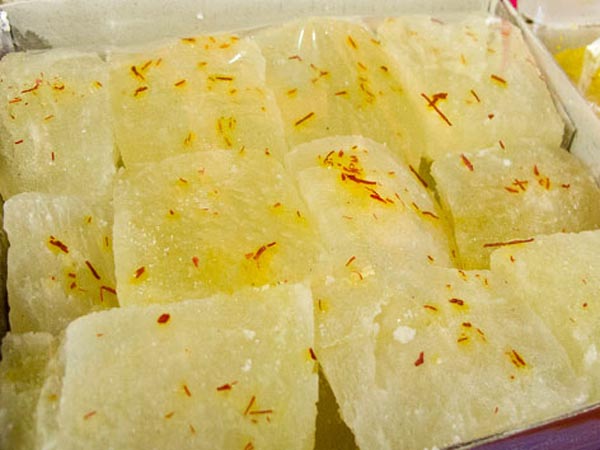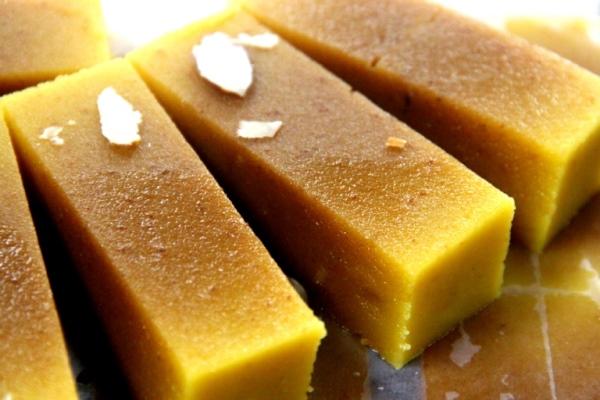Food Secrets: The Sweet Stories Behind The Legendary Agra Petha and Mysore Pak
While most of us have either heard of or tasted these traditional goodies, few Indians know the fascinating stories of what makes them so extraordinary.

A warm blanket on a chilly winter evening, a spectacular climax to a boring movie and the proverbial icing on a cake, there is no denying that a delicious sweet can give the perfect ending to any meal.
And Indians? We have a deep and abiding penchant for sweets. Not only are they an integral part of our staple fare, but they are also offered in our places of worship and in every celebration, big or small.
Unsurprisingly, India is home to a number of scrumptious sweets that enjoy a legendary reputation across the world. Two famous gems among this culinary treasure trove are Agra Petha and Mysore Pak.
While most of us have either heard of or tasted these traditional goodies, few Indians know the fascinating stories of what makes them so extraordinary.

Photo Source Agra Petha (left) / Mysore Pak (right)
For years, tourists visiting Agra have been buying a box of the trademark translucent petha. In fact, its not uncommon to see people hopping off the train at Agra’s railway station for a box, even if it’s a five-minute halt.
However, few of them know that the thriving cottage industry behind the petha once originated in the royal kitchens of the Mughal Empire. The story goes that Emperor Shah Jahan once ordered his royal chefs to prepare a sweet that would be as pure and as white as the marble-clad Taj Mahal.
The result was the petha. It is said that during the 17th-century reign of Shah Jahan, this soft sugary sweet provided instant energy to the thousands of workers involved in building the Taj Mahal.
From then onward, petha’s popularity kept sky-rocketing, spreading far and wide across the country.

Today, the petha is still made the traditional way i.e from white pumpkin or ash gourd that is peeled, de-seeded and then boiled in rose-flavoured sugar syrup (a process called josh lena). Still soaked in syrup or dried for a longer shelf life, the soft translucent chunks are then arranged in perfect rows.
In Agra’s Noori Gate area, more than 700 cottage units churn out this delicacy day after day. Keeping up with the changing demands and tastes of consumers, these units have also created newer types of pethas such as the cherry, orange, pineapple, almond, grape, coconut, paan, khus and even chocolate.
Interestingly, the Agra petha is traditionally complemented by the Agra dalmoth, a lip-smacking spicy and salty snack prepared from gram flour and dry fruits.
You May Like: 20 Delectable Indian Sweets You Probably Haven’t Heard Of, But Must Try Right Away
As for the Mysore Pak, every fan of the delectable delicacy knows that it broadly comes in two varieties — the ghee-soaked fudgy versions available in city sweet shops and the powdery, porous blocks sold from glass jars in small stores.
But a true connoisseur will tell you that the best Mysore Pak sits somewhere between these two extremes and can be found at Guru Sweet Mart on Mysore’s Sayyaji Rao Road. For nearly 80 years, the humble corner shop has delighted its loyal following with its legendary Mysore Pak.
What makes this nondescript store so special is that its owners are the descendants of the man credited with inventing the sweet, Kakasura Madappa.
Affectionately called the nalapaka — he who makes the paka, or sweet concoction in Kannada — Madappa was the royal chef of the reigning King of Mysore, Krishna Raja Wodeyar when he created the Mysore Pak.

According to the local folklore, one fine day in the 1930s, Madappa was asked by the king to produce a ‘different’ sweet for him. Experimenting in his kitchen to complete this task, the talented chef mixed gram flour (besan), ghee, sugar and a sprinkling of cardamom powder to make a decadent syrup.
However, by the time the King finished his lunch, the syrupy desert had cooled down to become a fudge-like cake. But it was too late to change it and Madappa hesitantly served it to the King. Delighted by the flavours of the sweet, Krishnaraja Wodeyar dug in before demanding a second helping and asking what the crumbly morsel was.
The nervous Madappa said the first thing that came to his mind – the Mysore Pak! Unsurprisingly, it was soon officially designated the royal sweet of Mysore. Even today, the platter of food prepared during the Dasara festivities in the city is incomplete without this much-loved sweetmeat.
So the next time you are in Mysore, take a detour to Guru Sweet Mart and inhale the enticing aroma rising from still-warm trays of the “special” Mysore Pak. And yes, do not forget to dig in for an unforgettable gastronomic adventure!
Also Read: The Fascinating History of Rasgulla and the ‘Sweet’ Battle Over its Origin
Like this story? Or have something to share? Write to us: [email protected], or connect with us on Facebook and Twitter.
NEW: Click here to get positive news on WhatsApp!
If you found our stories insightful, informative, or even just enjoyable, we invite you to consider making a voluntary payment to support the work we do at The Better India. Your contribution helps us continue producing quality content that educates, inspires, and drives positive change.
Choose one of the payment options below for your contribution-
By paying for the stories you value, you directly contribute to sustaining our efforts focused on making a difference in the world. Together, let’s ensure that impactful stories continue to be told and shared, enriching lives and communities alike.
Thank you for your support. Here are some frequently asked questions you might find helpful to know why you are contributing?


This story made me
-
97
-
121
-
89
-
167











